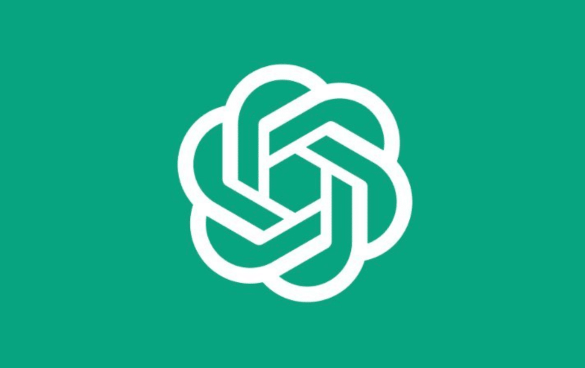Domain
The strength of your domain is a powerful SEO ranking factor. Your domain is considered when users enter search queries related to your website. Discover whether different aspects of your domain impact your search rankings!
Domain age
Ranking factor? No❌
According to Google, your domain age doesn’t directly impact your ranking in search results. A website that’s been up for six months is the same as a website that’s been up for a year or two.
Older domains, however, do tend to rank better. But why?
Older domains tend to have more of things that do impact rankings, like backlinks and content. So, it doesn’t have anything to do with their age, but rather, that these websites have been following other best practices longer than newer websites.
Domain history
Ranking factor? Maybe 🤷🏻
Domain history, while not a prominent ranking factor, is still something to consider. If you purchase a domain that has a questionable history or gaps in registration, it can make it hard to get that domain to rank well.
This problem becomes even larger if you purchase the domain from someone that used it for black-hat purposes.
To protect yourself from this happening, visit archive.org to see the history of the domain you’re interested in.
Domain name
Ranking factor? No ❌
Your domain name itself isn’t considered to be a direct Google ranking factor. Using a keyword in your domain name, for example, won’t help with ranking.
Your domain name does impact branding and user experience, which are ranking factors. If you have a confusing domain name, it’ll impact people remembering your brand name. So, choosing a branded, clear domain name will help create a better experience and improve your SEO.
Country-specific TLD or extension
Ranking factor? Yes ✅
A country code may help you rank in that country because it signals that your content is valuable to users in that specific country to region. The counterpoint to this, however, is that it can hinder your ability to rank globally.
If you’re a local business that only services your area, this is a great move. But if you’re trying to reach companies across the globe, you may want to stick to just a .com.
URLs
URLs are a key component of your website — it’s the location of where people can find specific information. But, do they have an influence on your SEO? Let’s see what URL-related factors can influence your SEO!
URL length
Ranking factor? No ❌
There are no indications that the length of your URLs has an influence over your SEO ranking.
URL clarity
Ranking factor? Maybe 🤷🏻
There’s been a long debate about whether URL clarity influences SEO rankings. While it’s not considered a direct ranking factor, the clarity of your URLs can influence user experience.
For example, having a URL like www.website.com/djdj552/224/article/230101 isn’t helpful to a user. It provides no context.
On the other hand, a URL like website.com/tea/herbal-tea/top-herbal-tea-brands provides tons of context for the user. They know where they are on your website and how the URL is relevant to their query.
So, opt for clear URLs to ensure you provide a seamless user experience.
Backlink anchor text
Ranking factor? Maybe 🤷🏻
While it’s not 100% known, backlink anchor text is likely to be an SEO ranking factor. Anchor text is crucial for providing search engine crawlers with context to a page. The anchor text serves as a preview of what the linked page is about, so it is likely a ranking factor that influences what your linked page ranks for and its relevancy.
Internal links
Ranking factor? Maybe 🤷🏻
Internal links on your website aren’t known to be an SEO ranking factor, but they likely have an influence. After all, internal linking helps Google’s crawlers discover pages on your website and determine their relevancy (through anchor text). If you’re creating content, considering adding relevant internal links to your pages to help with ranking.
HTTPS
Ranking factor? Yes ✅
While the weight of this SEO ranking factor is light, it still has an impact on your SEO performance. Google prefers to rank pages with website security because it ensures users information will be protected. While factors like relevancy will outweigh security, website security is still fundamental to ranking.
Duplicate content
Ranking factor? Yes ✅
Duplicate content influences where your link juice goes. If you have two pages ranking for the same keyword, your link juice gets split between the two pages, which can keep you from ranking because one page isn’t getting all the juice. Using a redirect to direct one of the duplicate page’s link juice to the other can help improve your page’s ranking.
Page tags
Page tags are elements that help provide context of what your page is about. See which tags influence your ranking in search and which ones don’t!
Title tag
Ranking factor? Yes ✅
Your title tag is what appears in search results with your listing and provides context to the focus of your page. It’s one of the prime areas to place your target keyword, too, because it gives search engines and users necessary context about what to expect on your page.
Meta description
Ranking factor? No ❌
Your meta description (the blurb that appears below your title tag in search results) doesn’t influence your ranking in search results. It does impact whether people click on your listing, which can influence your SEO performance. You want to optimize your meta descriptions to provide a quick summary of what to expect on your page, so users opt to click and explore your website.
H1 header tag
Ranking factor? Yes ✅
Your H1 is the title you give to your page and is the first thing people see when they click on your listing from the search results. It’s crucial that you optimize this tag to show your page is still relevant to the user’s query. Don’t forget to integrate your target keyword in here, too!
Heading tags (H2, H3, etc.)
Ranking factor? Maybe 🤷🏻
While heading tags aren’t explicitly listed as being a ranking factor, they can potentially influence your ranking in search results. These subheadings help create a hierarchy for your page and organize it, which makes it easier for users to skim and find the information they need (leading to longer dwell times and engagement — both good for SEO!)
While it’s not entirely clear whether your heading tags influence search rankings, it’s good to optimize them for your target keyword and use them to create flow and structure on your pages.
Keyword meta tag
Ranking factor? No ❌
Google does not take the keywords meta tag into consideration when ranking your website because it can be easily abused. People could easily stuff keywords to try to manipulate rankings, so Google doesn’t use this as a factor.
Canonical tags
Ranking factor? Yes ✅
Canonical tags are incredibly crucial for ensuring your link juice and ranking power goes to the right version of a page. If you have duplicate pages, your link juice and value gets split between them, making it hard for either page to rank at the top of search. Using a canonical tag tells Google which page should rank, which increases that page’s ability to rank better in search results.
Content
Content is a crucial component of your search strategy — it’s what ranks in search results. So, what components of your content process matter for creating an impactful SEO strategy?
Content freshness
Ranking factor? Yes ✅
Content freshness does impact your performance in search results. Google has a system in place designed to deliver fresher content for queries where it’s expected. So, if you have content on your website that hasn’t been touched in a few years, giving it a refresh could help improve rankings.
Originality
Ranking factor? Yes ✅
With the rise of AI-generated content, originality will become a more prominent ranking factor. With Google’s helpful content update, they shared an emphasis on original, helpful content. So, when you add content to your website, consider adding elements that make it unique from other ranking pages to give it some originality.
E-E-A-T
Ranking factor? Yes ✅
E-E-A-T stands for Experience, Expertise, Authoritativeness, and Trust. Basically, it’s content that leverages your experience and knowledge in your industry to create a reliable resource of information for your audience. Google gives more weight to content that aligns with E-E-A-T (especially for “Your Money, Your Life” [YMYL] topics), so it’s important to leverage your expertise within your content to build trust.
Image alt text
Ranking factor? Yes ✅
While the impact of alt text is low, it’s still important. Alt text makes it possible for Google’s crawlers to “read” images and other visuals — it also helps visitors that use screen readers get the optimal experience.
When you create your image alt text, you can use relevant keywords (only when it fits with context) to help provide more context to your page.
Image file name
Ranking factor? Yes ✅
Another low-impact SEO ranking factor is image file name. Using short, descriptive file names is best for SEO purposes. So, instead of adding an image to your website labeled “IMG_22445.JPG,” an image file like “womens-red-dress.JPG” would be better.
Author name & bio
Ranking factor? Maybe 🤷🏻
With the rise of AI-generated content, factors surrounding authenticity of online content may become more prominently. While it’s not a confirmed factor, delivering author name and biography can be impactful for showcasing the trust, authority, authenticity, and expertise of your content.
CMS system
Ranking factor? No ❌
The content management system (CMS) you use doesn’t impact your ability to rank in search results.
Stock images
Ranking factor? No ❌
Using stock images in your content? It won’t impact your SEO. It can, however, impact the user experience and credibility of your pages. If you’re using stock photos in place of staff photos, for example, it could mislead people about your business.
The best approach is always to use authentic images to help build credibility for your business.
Word count/length
Ranking factor? Maybe 🤷🏻
Google does not have a preferred word count — the number of words or length of a page doesn’t impact whether it’s good or poor quality. But, there are some that believe the length of content can impact how well your page ranks.
Realistically, it’s all about answering the user’s questions and ensuring they get the information they need — however long that may be.
Content structure
Ranking factor? Maybe 🤷🏻
While it’s unknown if the structure of your content impacts SEO, it definitely impacts user experience. If you throw a bunch of words on a page into a bunch of paragraphs with no images, it’s not going to provide a good experience for your audience. Well-structured content, that uses headings, subheadings, visuals, and small paragraphs, will provide a better experience and keep people on your page (which boosts SEO).
Grammar/spelling
Ranking factor? No ❌
Not the best speller? It’s okay, Google doesn’t care! Your spelling and grammar aren’t factors in ranking in search results.
But keep in mind that your audience, who primarily reads your content, can spot spelling and grammar errors. They may not want to engage with your content if there are too many errors.
Semantic keywords
Ranking factor? No ❌
Semantic keywords are keywords that naturally come up when discussing a topic. So if you’re writing a page about what a high-yield savings account is, some semantic keywords could include “money” or “saving money.”
Even though these keywords can add great context to your page, they won’t influence your ability to rank.
Interactive elements
Ranking factor? No ❌
Interactive elements, like calculators and quizzes, don’t have a direct impact on your search performance. They can, however, increase engagement and dwell time on your pages, which are positive signals to search engines like Google.
Technical aspects
Not everything with SEO is on the surface. Some behind-the-scenes components can have an impact on your performance in search results. Find out which ones!
Robots.txt
Ranking factor? Yes ✅
Your robots.txt is a crucial component to telling crawlers which parts of your website they’re allowed to access. This helps you get pages crawled and indexed, so they can rank in search results.
XML sitemap
Ranking factor? Yes ✅
Your XML sitemap tells search engine crawlers what the essential pages on your website are. It serves as a guide for what pages should be indexed, so it’s fundamental to great this sitemap if you want your most important pages crawled and indexed for search results.
Site architecture
Ranking factor? Yes ✅
The structure of your website helps provide a larger context for Google and helps it understand the role different pages play on your website. For example, having all your blog posts under a URL that includes /blog/ makes it easier to categorize and understand the role of the page.
Site navigation
Ranking factor? Yes ✅
Similar to site architecture, your website navigation helps Google’s crawlers understand what role a page plays in terms of your site. Having a clean, organized website makes it easy for search engines to get context, and makes it easy for users to find information they need.
Structured data
Ranking factor? Yes ✅
The weight of this SEO ranking factor is light, but still impactful. Structured data helps you describe your content to search engines, so it can better understand your pages, and therefore rank them appropriately.
Site reliability
Ranking factor? Yes ✅
If your website is constantly crashing when people visit it, it’ll impact your performance in search results. Google wants to deliver pages that provide a good user experience — constant crashing doesn’t provide a good experience, which can lead to lower rankings.
Breadcrumb navigation
Ranking factor? Maybe 🤷🏻
While it may be unknown whether breadcrumb navigation is a true SEO ranking factor, it definitely influences how users interact on your website. Breadcrumb navigation makes it easy for users to see where they are, while affording them the opportunity to go back if need be. It makes the experience on your website better for people browsing on your website, which can lead to longer engagement.
PageRank
Ranking factor? Yes ✅
PageRank evaluates the quality and quantity of links a page gets, and ranks them based on importance. Pages with more high-quality links are believed to rank higher than pages with lower-value links.
Users
User information and interactions sometimes have an influence on how you rank in search results. Discover what does (and doesn’t) impact your SEO!
User location
Ranking factor? Yes ✅
Where users are located when searching can influence the results they see, especially with local searches. Google aims to deliver information that’s most useful and relevant to the user, and sometimes it’s location-dependent. That means optimizing your website for location-based keywords is good for showing up in these types of searches.
User interests
Ranking factor? Yes ✅
Google’s Discover feature delivers content to people based on their interests, which is gathered from web and app activity. So, for this search feature, Google takes user interests, along with helpfulness of content, into consideration when determining what content to deliver.
User search history
Ranking factor? Yes ✅
Google takes the user’s past searches into consideration to deliver the most relevant and valuable content the user needs at that moment.
Bounce rate
Ranking factor? No ❌
One of the most common misconceptions about ranking for SEO factors is that bounce rate is one of them. Bouncing occurs when someone visits your website and leads shortly after, without visiting any other pages.
Bounce rate hasn’t been an SEO ranking factor for two reasons:
1. It’s easy to manipulate.
2. Some pages have a high bounce rate because they’re meant to be single-session pages. Therefore, it’s not viable to include bounce rate as a factor.
Direct traffic
Ranking factor? No ❌
Direct traffic is another metric that’s easy to manipulate, so it’s not part of SEO ranking factors.
Other factors
There are some one-off factors that are and aren’t SEO ranking factors. Take a look to see which ones you need to keep on top of!
Manual action
Ranking factor? Yes ✅
If you’ve had a manual action taken on your website by Google, it can negatively impact your performance in search. Manual action happens when a human reviewer at Google determines that a page (or pages) on your website don’t comply with Google’s policies.
Having a manual action can result in your website ranking lower in search results, or, worse yet, being completely removed from them.
If you have a manual action taken against your website, you’ll need to file documentation of how you’ve corrected the issues and submit it to Google Search Console. Google will then determine if your corrective actions were sufficient and lift your manual action.
Website spam
Ranking factor? Yes ✅
If you have spammy content on your website, you’re likely to fall victim to depleted search performance. Google has a strong spam detection system, which includes SpamBrain, that helps them detect content and actions that violate their spam policies. This includes generating low-quality content to game rankings, buying links, and more.
So, if you’re doing any of the above, Google will likely flag your website, which will harm your SEO performance.
Emojis
Ranking factor? No ❌
Despite the fun flair emojis add, they don’t have any influence over how a page performs in search results.
Website redesign
Ranking factor? No ❌
Doing a website redesign isn’t a ranking factor, but it can impact your SEO performance if not done correctly. You need to be mindful when you redesign your website that you don’t negatively impact your SEO. For example, if you’re adding new design elements, make sure they don’t slow down your website.
Any drops in your SEO will likely be temporary and can be corrected.
Page layout
Ranking factor? No ❌
The layout of your page has no influence over how well your pages rank in search results.
Page quantity
Ranking factor? No ❌
The quantity of pages on your website isn’t an SEO ranking signal. If anything, the quality of your pages holds more weight than how many pages you have.
Pop-up ads
Ranking factor? Maybe 🤷🏻
If you have pop-up ads on your website, it could potentially impact your SEO. Not only do pop-up ads provide a disruptive user experience, but they can also affect page load times and shift elements around on the page as users engage.
None of this creates a good user experience, which has potential to hurt your rankings.
Over optimization
Ranking factor? Yes ✅
Over optimization of your website can negatively impact your performance in search results. Creating too many improvements to your website can harm your website’s ability to rank in search results. It can often lead to negative practices like keyword stuffing and spammy content creation (mass content production to help improve rankings).
Avoid overdoing it with SEO by taking your time with making changes and updates. You can make changes gradually to see how they impact your SEO and then go from there.









